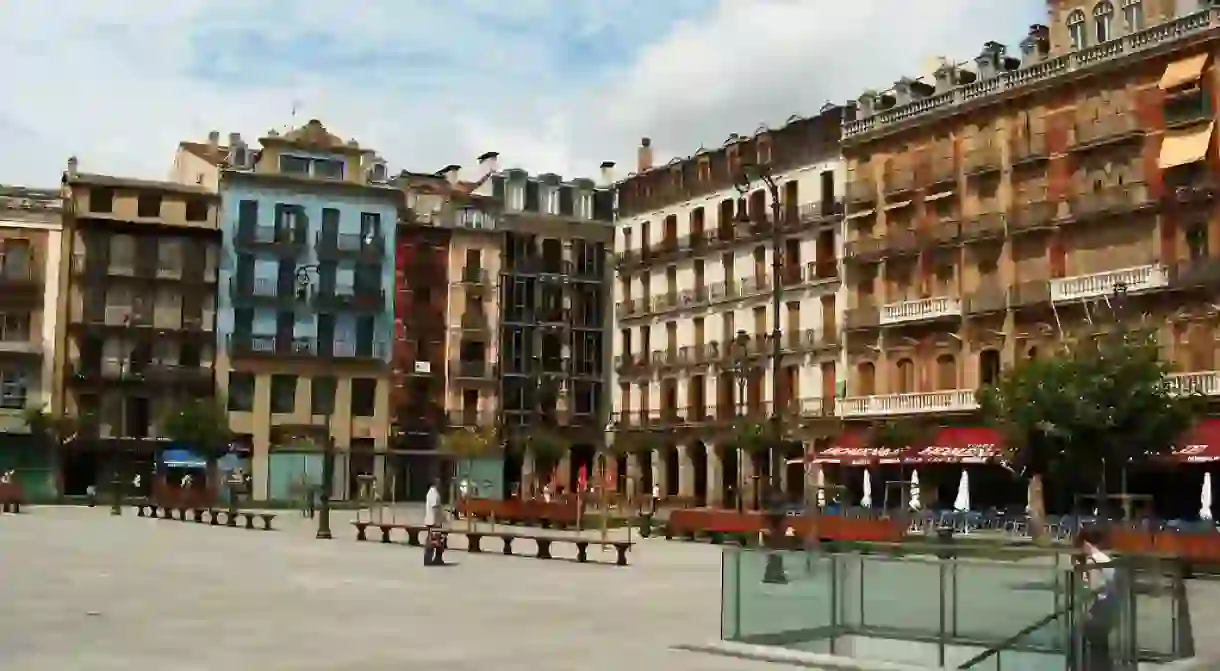20 Must-Visit Attractions in Pamplona, Spain

The city of Pamplona is located within the region of Navarra in northern Spain and has become synonymous with the San Fermin Festival, or “The Running of the Bulls” – one of the country’s most well-known events. If you’re not visiting the city during these crazy days in July, however, there is still lots to see. Here are 20 of Pamplona’s must-visit attractions.
Casco Viejo
Pamplona’s Old Quarter is one of its most picturesque and simply can’t be missed. Located right in the heart of the city, the majority of it was built in medieval times and is characterized by long narrow streets and tall mismatched buildings. It is here where many of the city’s top sights are located.

Ciudadela & Vuelta del Castillo Park
The old city citadel was ordered to be built by King Philip II in 1571 to protect against invasions from the French; it was originally a pentagon-shaped fortification with five bastions. The Citadel and the Vuelta del Castillo are considered to be the best example of military architecture from the Spanish Renaissance period.
Pamplona City Walls
Surrounding the Citadel are the Pamplona City Walls, one of the best-preserved military structures in Spain, and thus a national monument. Take a walk around the walls from the Media Luna to Taconera parks to see its many bastions and defense structures.

Interpretation Center of the Fortifications
Museum, Park
La Catedral de Santa María la Real de Pamplona
Cathedral

Plaza del Castillo
At the center of the Casco Viejo sits the Castillo Square, covering 150,700 square feet (14,000 square meters) and surrounded by colorful 18th-century buildings and balconies. In the past the square was used for everything from bullfights to markets, but today it’s more for meeting friends and drinking or eating in one of its many surrounding bars and cafés.
Museo de Navarra
Museum

Portal de Francia
A gateway into the city fortifications, Portal de Francia is an impressive entrance into the Old Quarter. It was named the “entranceway of France” because the city’s enemies came from across the border to the north. At the top of the gateway you can see the shield of Carlos I of Castile (IV of Navarre).
Taconera Park
The oldest and most beautiful park in the city, Taconera Park is located next to the old city walls. An elegant space, it features a lake, moat, flower gardens and many animals such as deer, ducks, peacocks, pheasants and swans roaming free, as well as the Viennese Café.
Casa Consistorial
Building

Fiesta de San Fermín
If you’re here during festival season in July, you won’t be able to miss the Fiesta de San Fermin, better known as “The Running of the Bulls.” During this heart-pumping event, locals run through the city streets alongside fighting bulls and aim to get as close as possible. The festival also features music, dancing, fireworks and feasting.

Iglesia de San Nicolás
Church

Palacio de Navarra
Building

Museo Universidad de Navarra
Museum

Parroquia San Lorenzo
Church
Monumento al Encierro
Pamplona Planetarium
Café Iruña
Cafe, Restaurant, Bar, Spanish

Sitting on the Plaza del Castillo, Café Iruña is a city institution and one of the most historic cafés in Pamplona. Established in 1888, it was the first place in the city to enjoy electric lighting and today still gives customers and old world feel with its period lamps, fancy mirrors and ornate archways. The author Ernest Hemingway spent much of his time here when he lived in the city, and there is a sculpture of him at the bar.
Parque de los Sentidos
Botanical Garden, Park
Calle de Zapateria
Running through the Casco Viejo, Zapateria Street is one of the most atmospheric streets in the area, lined with many souvenir shops and stores selling traditional products, as well as a few pintxos bars.













